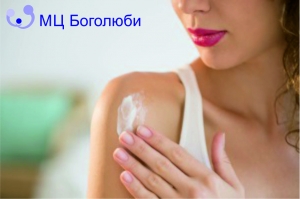Summer has come, and the most urgent seasonal problem is the inflammatory reaction of the skin, which develops as a result of excessive and prolonged exposure to the sun – solar erythema. This condition is very variable in gravity and can vary from slight redness of the surface layers of the skin to a burn of the first or second degree.
. Causes of Solar Erythema
Ultraviolet sun rays aggressively affect the skin, increasing blood flow in areas subject to radiation. They also help release cytokines and inflammatory mediators, such as histamine (responsible for itching). These factors determine the peripheral relaxation of the capillaries, their increased permeability and, as a result, redness and swelling.
Who is at greater risk?
The risk of erythema is determined by the phototype, that is, the dermatological classification associated with the amount of melanin present in the patient’s skin. This classification indicates a predisposition to a more or less pronounced inflammatory reaction to ultraviolet radiation. Basically, the level of «vulnerability» s determined by the color of the skin, eyes and hair.
Typically, phototype 1, to which light-eyed blondes belong, is very sensitive to UV radiation and is most at risk of solar erythema. However, this does not mean that people with a dark complexion should not defend themselves properly, preparing the skin for tanning and sun exposure.
We should not forget that the time of day also plays an important role: from 10 to 16 hours the sun becomes more dangerous, especially in those places where there are surfaces that reflect light – snow, sand.
Even parts of the body are not equally sensitive: eyes, nose and lips are more susceptible than arms and legs . In addition, babies under the age of six months should not be exposed to direct sunlight. Other vulnerable categories are – children under three years of age and older people.
Factors of solar erythema
Symptoms of solar erythema usually occur 1 to 24 hours after exposure to the sun. Skin changes depend on the duration and intensity of exposure. In most cases, after several hours of irradiation, the skin becomes reddened, warm to the touch, itchy. Damaged layers can be painful at the slightest contact and cause a burning sensation.
Severe cases of solar erythema are accompanied by swelling of the skin, blisters and blisters filled with fluid and surface desquamation.
If a large surface area of the body is involved in the inflammatory process, then general symptoms may develop, including fever, headache, dizziness, chills, weakness, and general malaise. These signs are caused by the release of inflammatory cytokines, such as interleukin 1.
Complications of solar erythema
The most common late complications of solar erythema are secondary skin infections and pigmentation disorders. In the long run, sunburns cause premature skin aging (with loss of elasticity, general dryness, wrinkles). In addition, repeated burns increase the risk of developing skin cancer, including melanoma.
When do you have to visit the doctor?
In the presence of inflammatory processes, it is recommended to consult a dermatologist at the «Bogoliuby MC », who can establish the correct diagnostic classification and prescribe effective therapy. The specialist’s assessment distinguishes solar erythema from photodermatosis, (including photosensitizing dermatosis), polymorphic light rash and solar urticaria.
Visit doctor in case of:
- any improvement was observed for 48 hours;
- temperature rises;
- vomiting, diarrhea, chills, confusion, fainting appear.
Treatment
Solar erythema tends to spontaneously heal over 4 to 5 days, during which it is important to avoid further exposure to sunlight. Skin treatment involves applying cool dressings to the affected areas to soothe itching. Subsequently, cosmetic products with soothing and moisturizing properties should be applied to the skin.
Of particular note is solar erythema with blisters. In this case, a dermatologist can prescribe local antibiotics, sterile dressings, non-steroidal anti-inflammatory drugs.

















